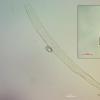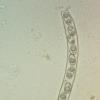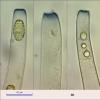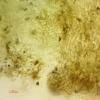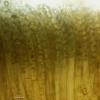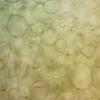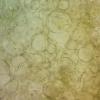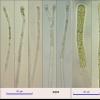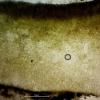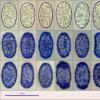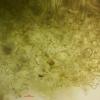
15-12-2025 15:48
 Danny Newman
Danny Newman
Melanospora cf. lagenaria on old, rotting, fallen

15-12-2025 15:54
 Johan Boonefaes
Johan Boonefaes
Unknown anamorph found on the ground in coastal sa

15-12-2025 21:11
 Hardware Tony
Hardware Tony
Small clavate hairs, negative croziers and IKI bb

15-12-2025 07:09
 Danny Newman
Danny Newman
indet. Rutstroemiaceae sp. on unk. fallen leavesMc

15-12-2025 07:05
 Danny Newman
Danny Newman
Pseudosclerococcum golindoi (det: Zotto)near Cosb

15-12-2025 11:49
 Danny Newman
Danny Newman
ITS sequences from the following two collections B

15-12-2025 12:34
 Danny Newman
Danny Newman
indet. Rhytismataceae on oak leafnear Purchase Roa

09-12-2025 12:06
 Andgelo Mombert
Andgelo Mombert
Bonjour,Je recherche l'article concernant Hypobryo
 Hello, I need help with this Peziza s.l. and at the same time I must confess I probably haven't done a good job.
Hello, I need help with this Peziza s.l. and at the same time I must confess I probably haven't done a good job.It was found on probably calcareous mossy roadside soil under beech and oak, altitude 500 m.a.s.l.
1 apothecium only, 27 mm on average. I was thinking about P. saccardoana or P. depressa or some Legaliana, but the microcharacters don't match I think.
Excipulum composed of globose cells mixed with narrow and inflated hyphae, undifferentiated, but I may have made a mistake in not distinguishing the thin layer of text. intricata from the subhymenium. Latex not observed, but the apotecium was already somewhat drier. External thin pruinose layer of cells of text. prismatica.
Subhymenium – I don't know, how to described it, but look.
Asci cylindric, up to 260 µm, with amyloid reaction WT type, pleurorhynchous.
Ascospores from sporeprint in water 14.5–16.3 × 8.3–9.8 µm, Q = 1.6–1.9, N = 40, solely with 2 LBs, ornamentation from irregular warts, mostly up to 0,8 µm, rarely 1,1 µm in height, some somewhat pseudoapiculate.
Paraphyses straight, sometimes forked under the top, containing brown intracellular pigment.
It's possible, that some more of my confusions will follow in the next few days. I guess I'm 'lucky' now to only have the most uncertain or mysterious collections, but it's more likely I'm just having a period of some torpid asco-decline :-)
Many thanks for your patience ;-)
Marek

The ecology is also compatible with this species.

Thank you.
M.

